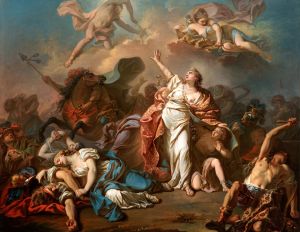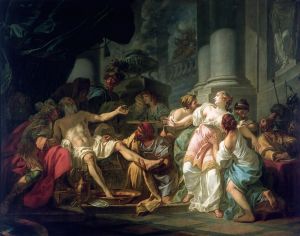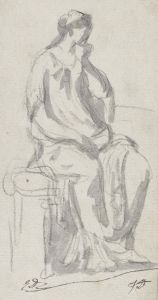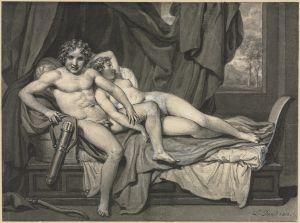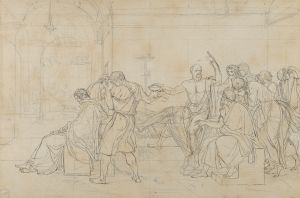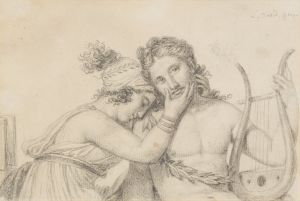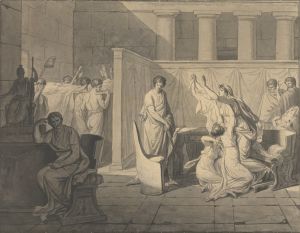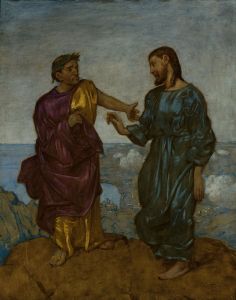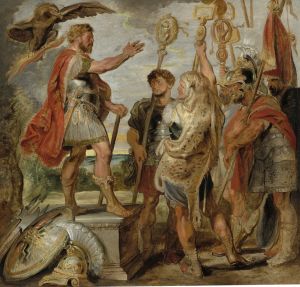
The Lictors Bringing Brutus the Bodies of his Sons
A hand-painted replica of Jacques Louis David’s masterpiece The Lictors Bringing Brutus the Bodies of his Sons, meticulously crafted by professional artists to capture the true essence of the original. Each piece is created with museum-quality canvas and rare mineral pigments, carefully painted by experienced artists with delicate brushstrokes and rich, layered colors to perfectly recreate the texture of the original artwork. Unlike machine-printed reproductions, this hand-painted version brings the painting to life, infused with the artist’s emotions and skill in every stroke. Whether for personal collection or home decoration, it instantly elevates the artistic atmosphere of any space.
"The Lictors Bringing Brutus the Bodies of his Sons" is a significant neoclassical painting by the French artist Jacques-Louis David, completed in 1789. This work is notable for its historical subject matter, dramatic composition, and its reflection of the political climate of the time.
The painting depicts a scene from Roman history, specifically from the life of Lucius Junius Brutus, the founder of the Roman Republic. According to historical accounts, Brutus was faced with a grave personal and political dilemma when his two sons were found to be involved in a conspiracy to restore the monarchy. As a staunch republican, Brutus was compelled to uphold the law and order their execution, demonstrating his commitment to the republic over his familial ties.
David's painting captures the moment after the execution, as the bodies of Brutus's sons are brought to him. The composition is carefully structured to convey the emotional and moral complexity of the scene. Brutus is depicted seated in shadow on the left side of the canvas, his face partially obscured, suggesting his inner turmoil and stoic resolve. His posture is tense, and his gaze is directed away from the bodies, emphasizing his emotional struggle.
In contrast, the right side of the painting is filled with light and activity. The lictors, Roman officers who carried out the executions, are shown bringing in the bodies, while Brutus's wife and daughters are depicted in various states of grief and despair. The stark division between light and shadow in the painting underscores the conflict between public duty and private sorrow.
David's use of neoclassical style is evident in the painting's clear lines, balanced composition, and the classical drapery of the figures. The influence of ancient Roman art and architecture is apparent, reflecting the Enlightenment ideals of reason, civic virtue, and moral integrity. The painting's emphasis on stoicism and sacrifice resonated with contemporary audiences, particularly in the context of the French Revolution, which began in the same year the painting was completed.
"The Lictors Bringing Brutus the Bodies of his Sons" was first exhibited at the Paris Salon of 1789, where it was met with critical acclaim. It was seen as a powerful statement on the nature of republicanism and the sacrifices required to uphold it. The painting's themes of justice, duty, and personal sacrifice were particularly poignant during a time of political upheaval in France.
Today, the painting is housed in the Louvre Museum in Paris, where it continues to be admired for its artistic mastery and historical significance. Jacques-Louis David's work remains a quintessential example of neoclassical art, capturing the tension between personal emotion and public responsibility in a way that continues to resonate with viewers.





